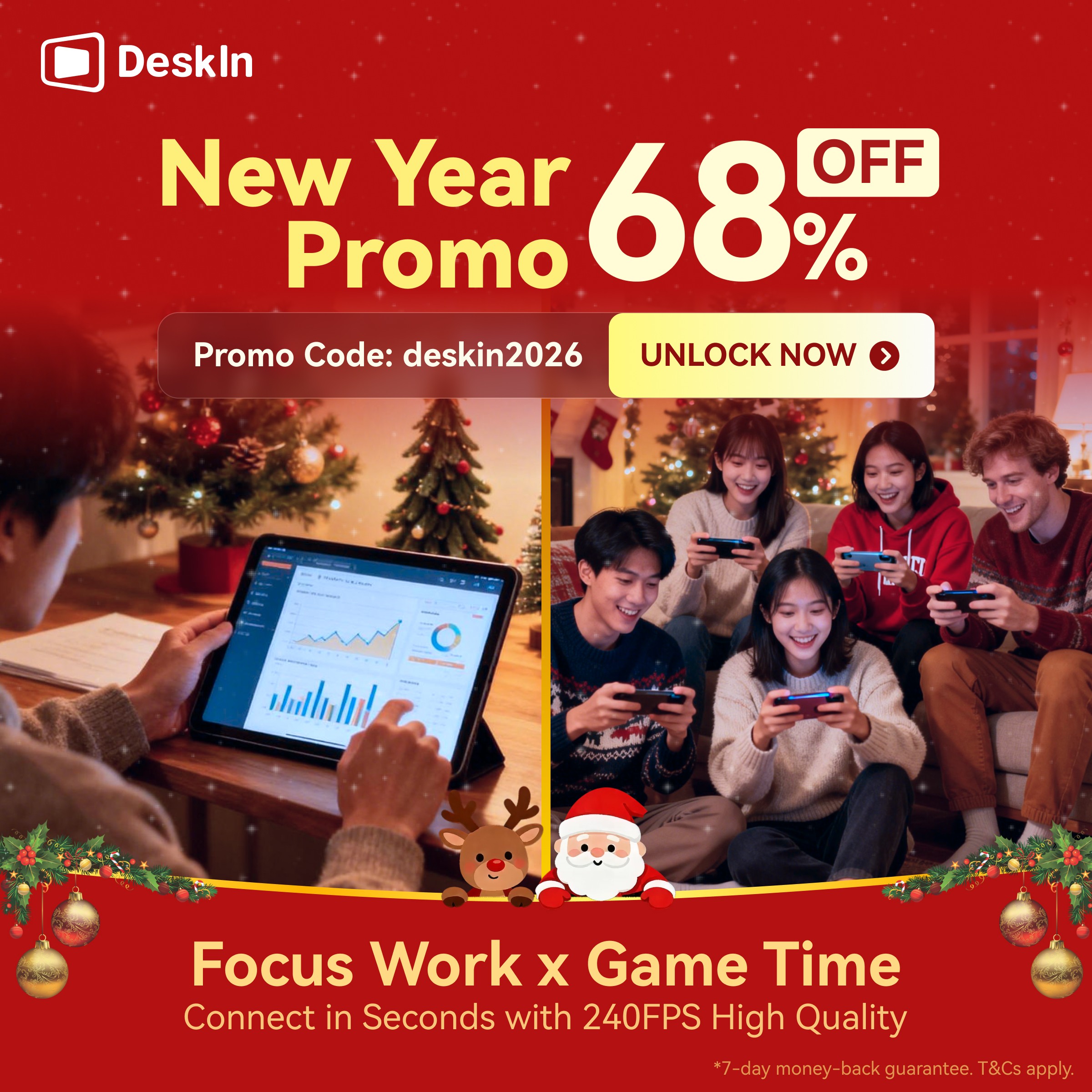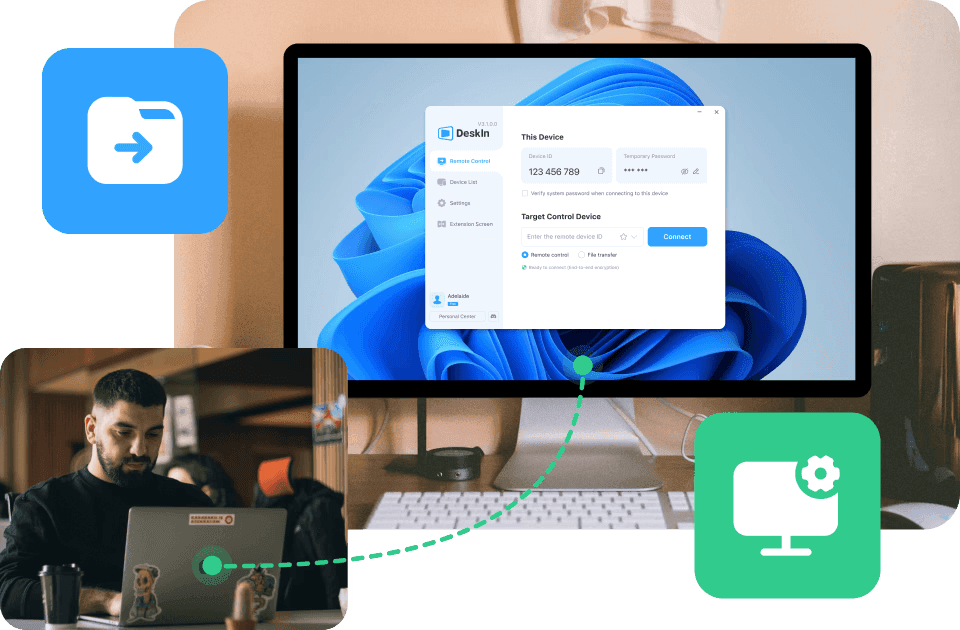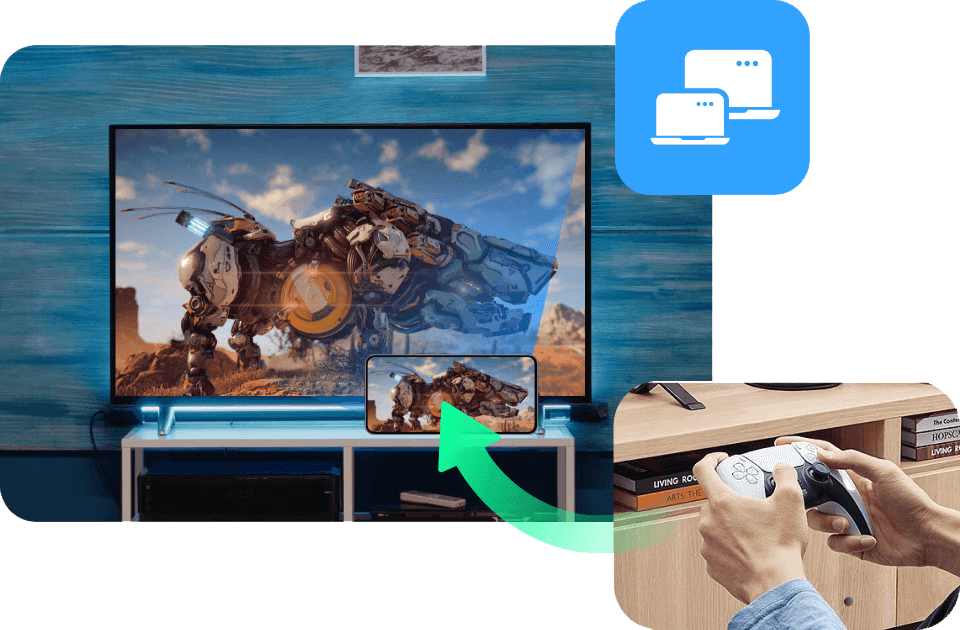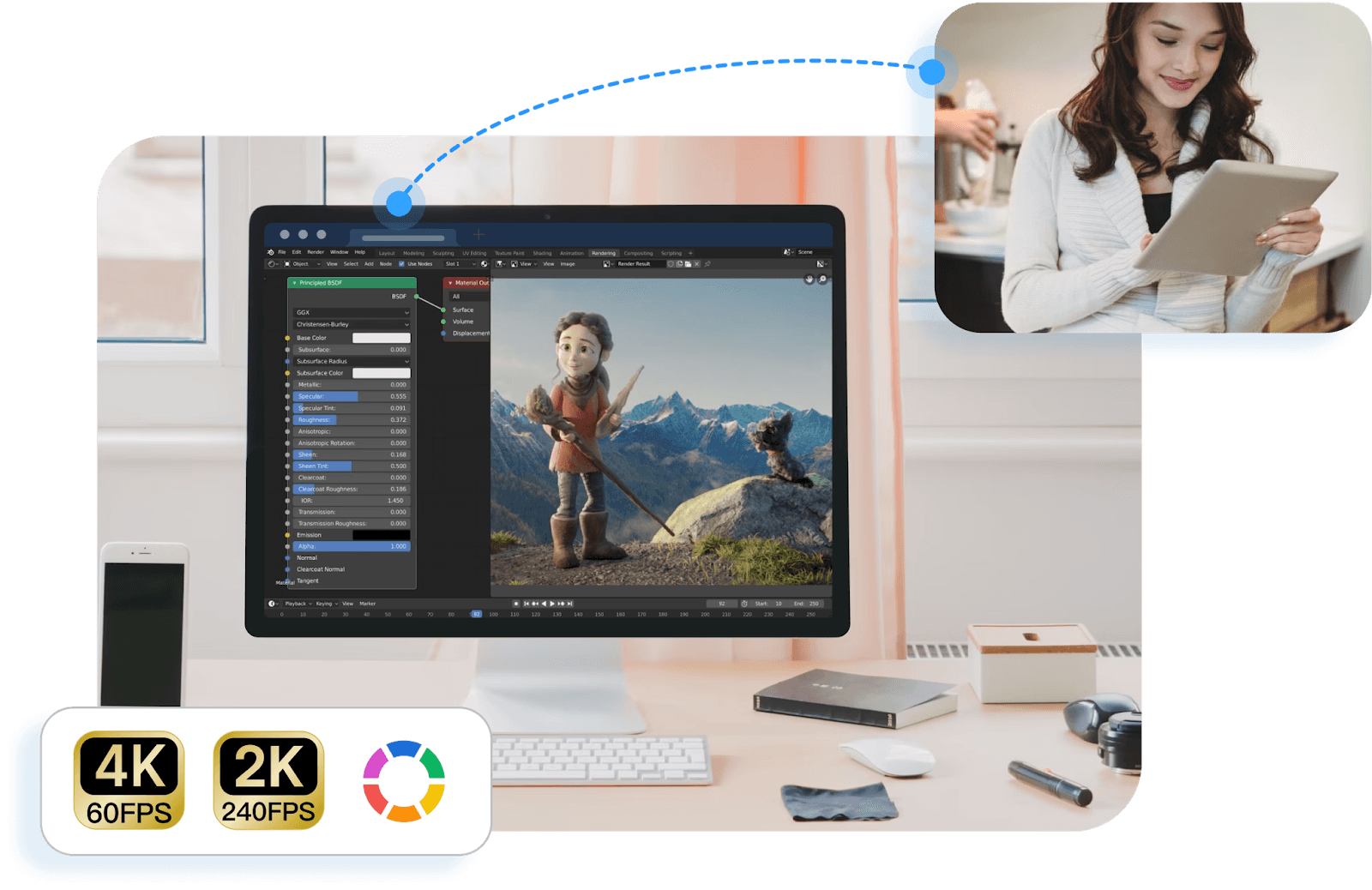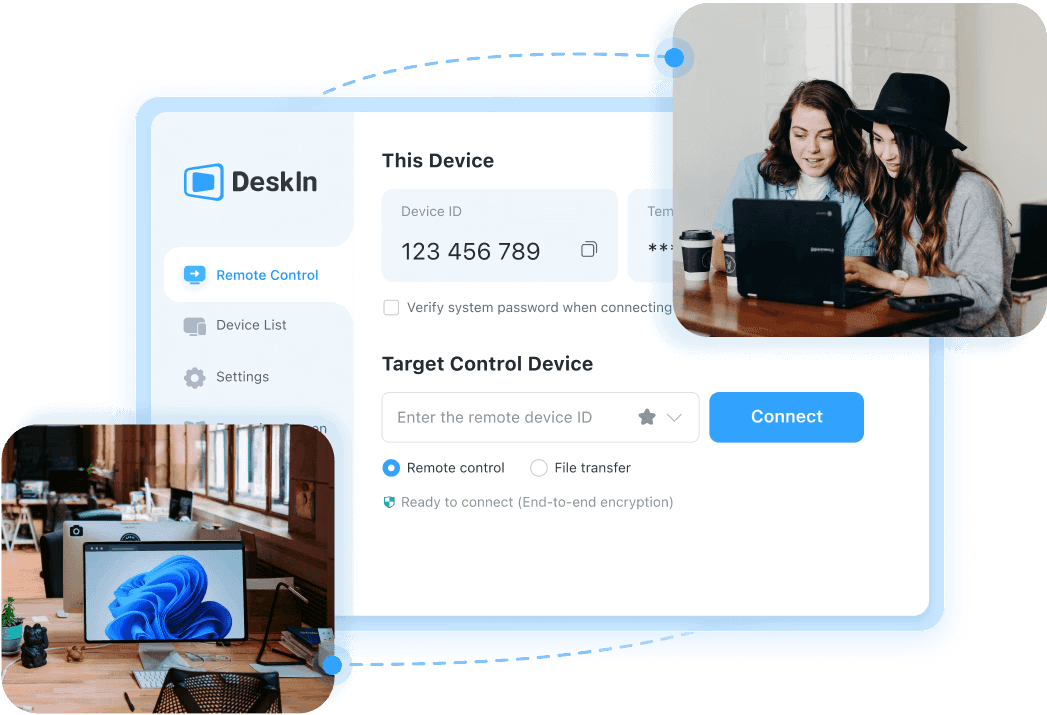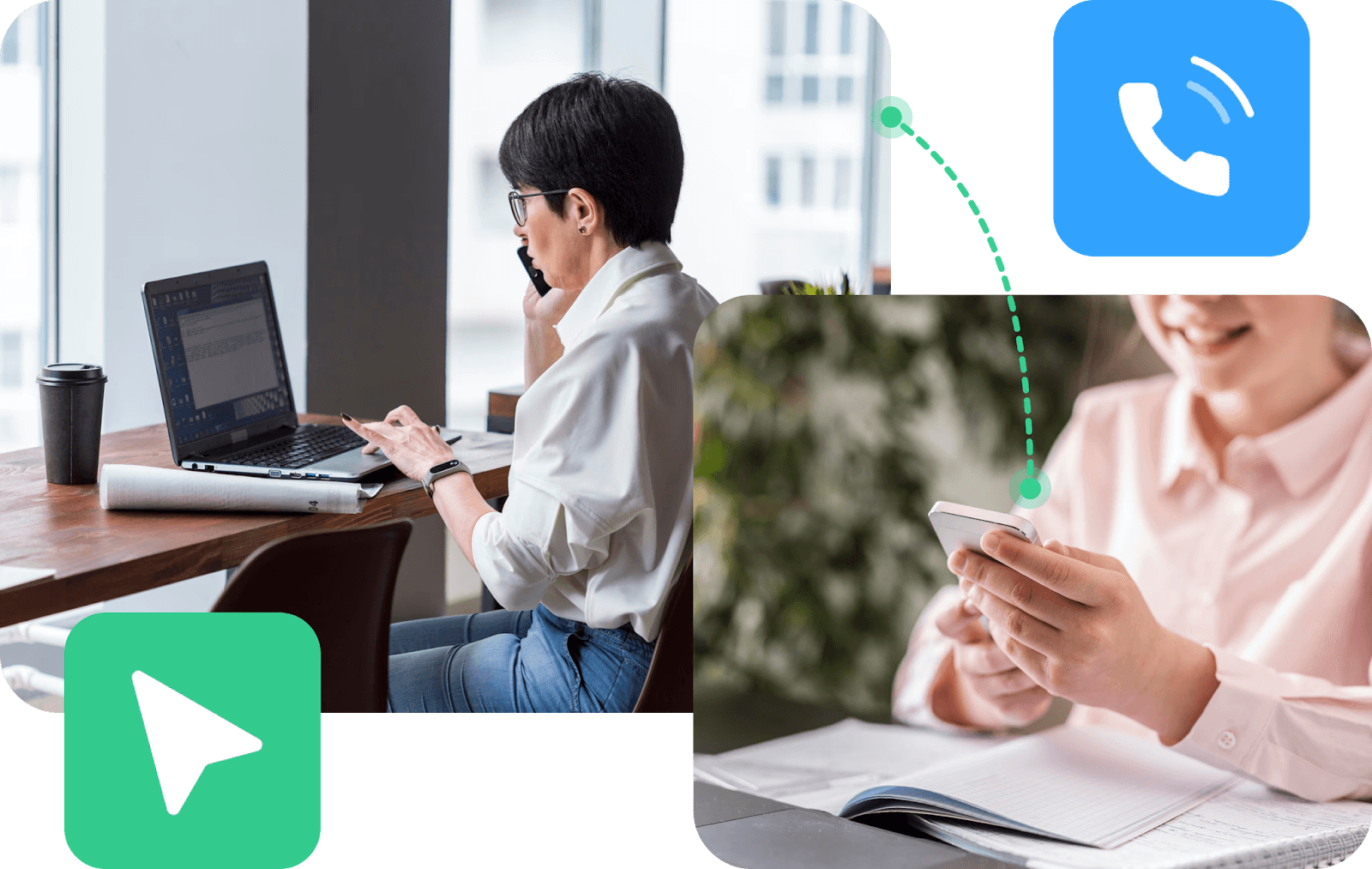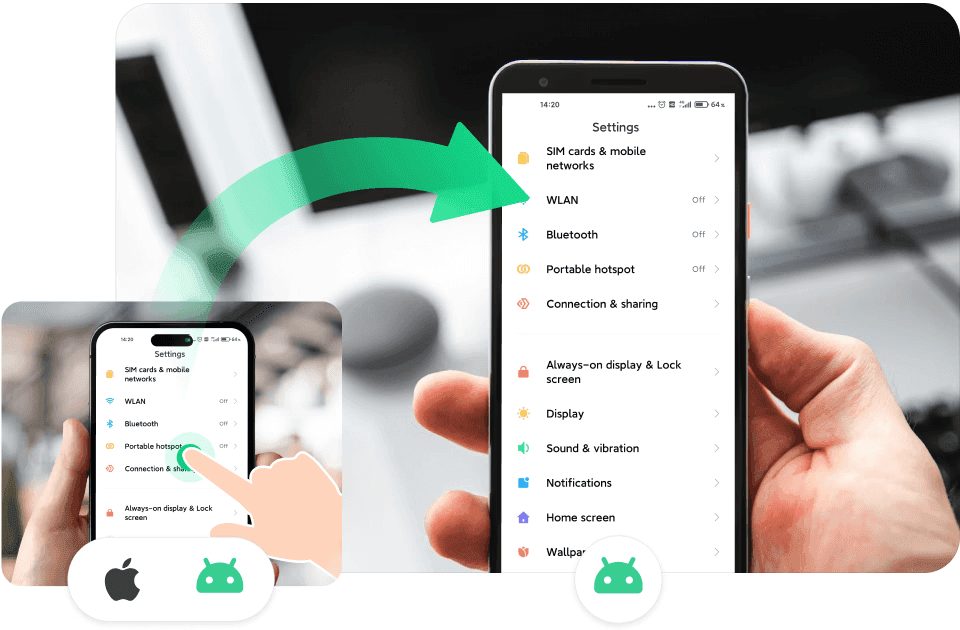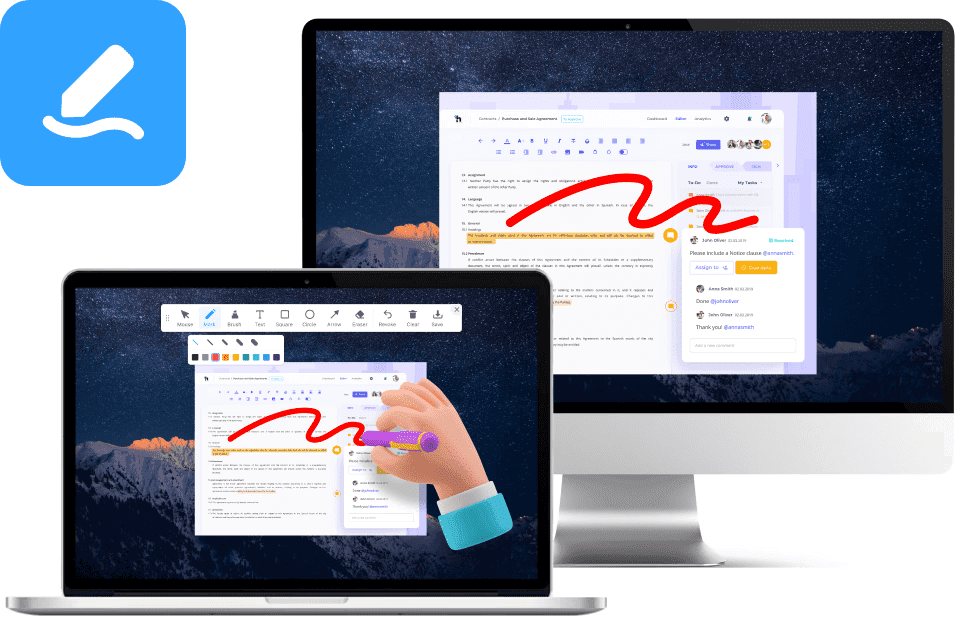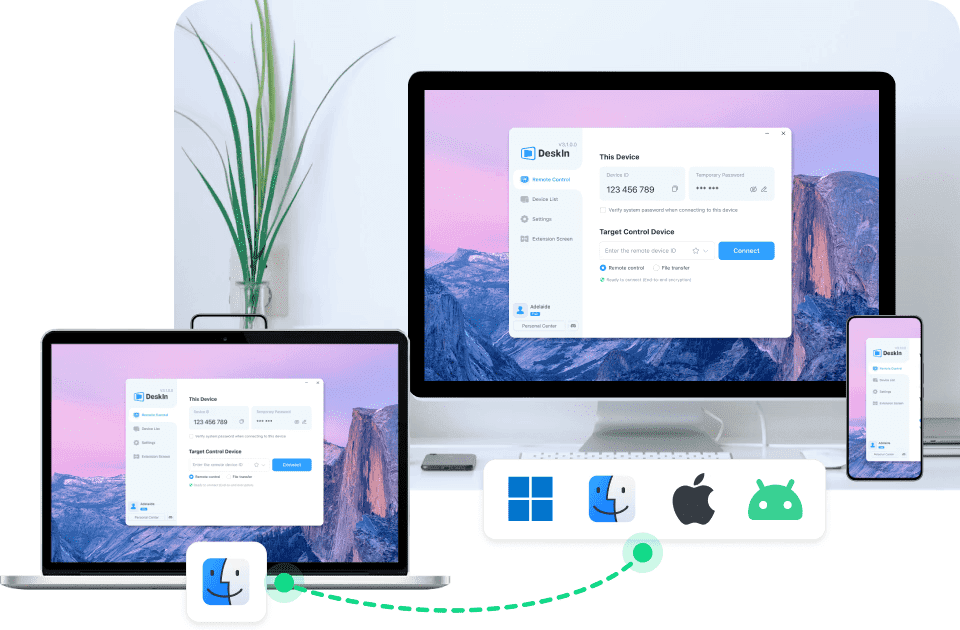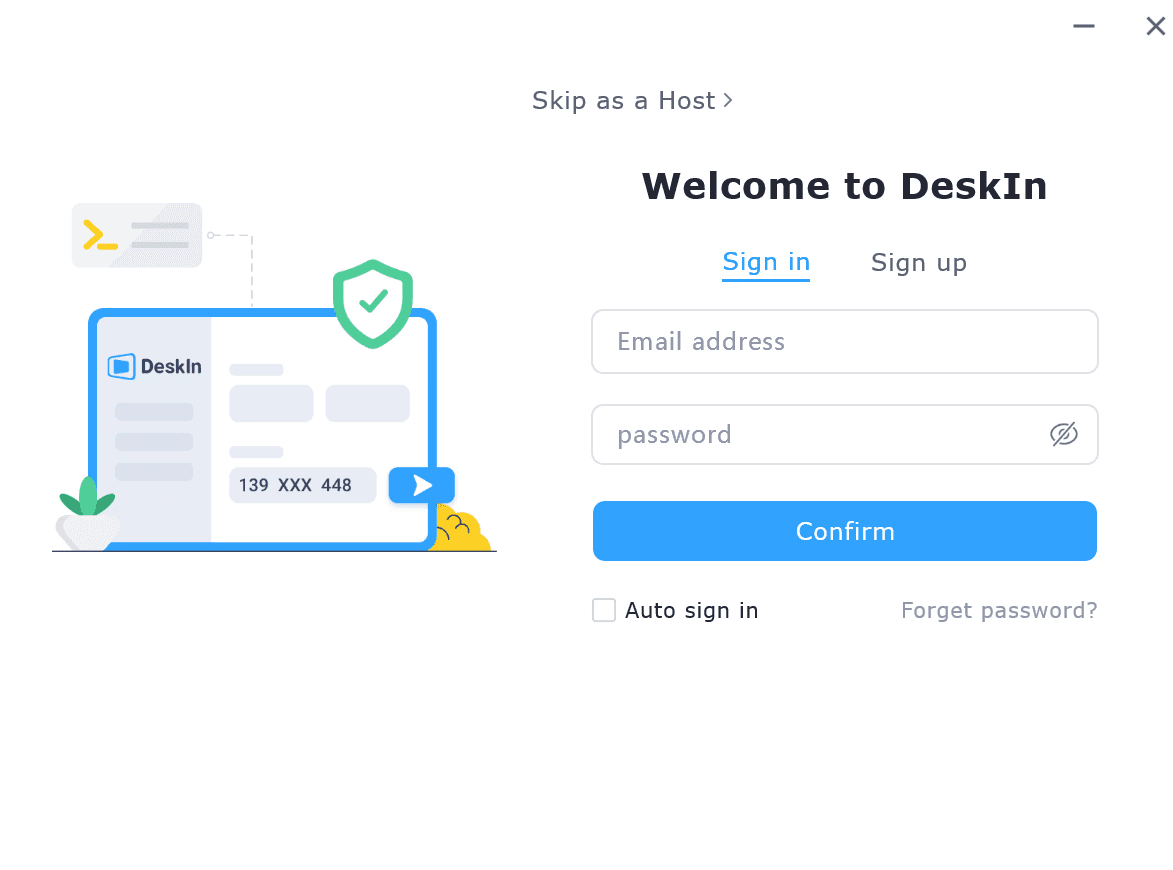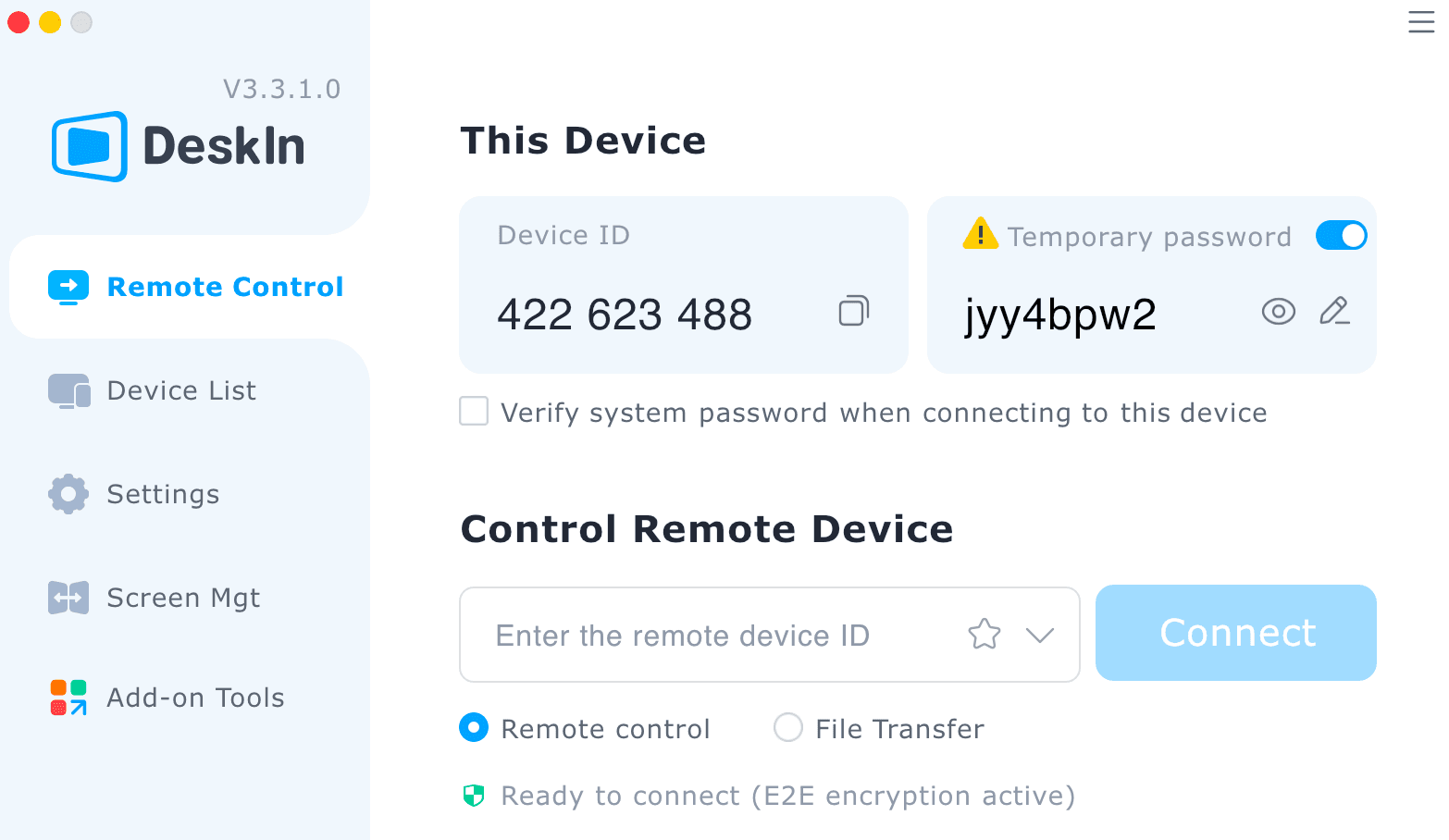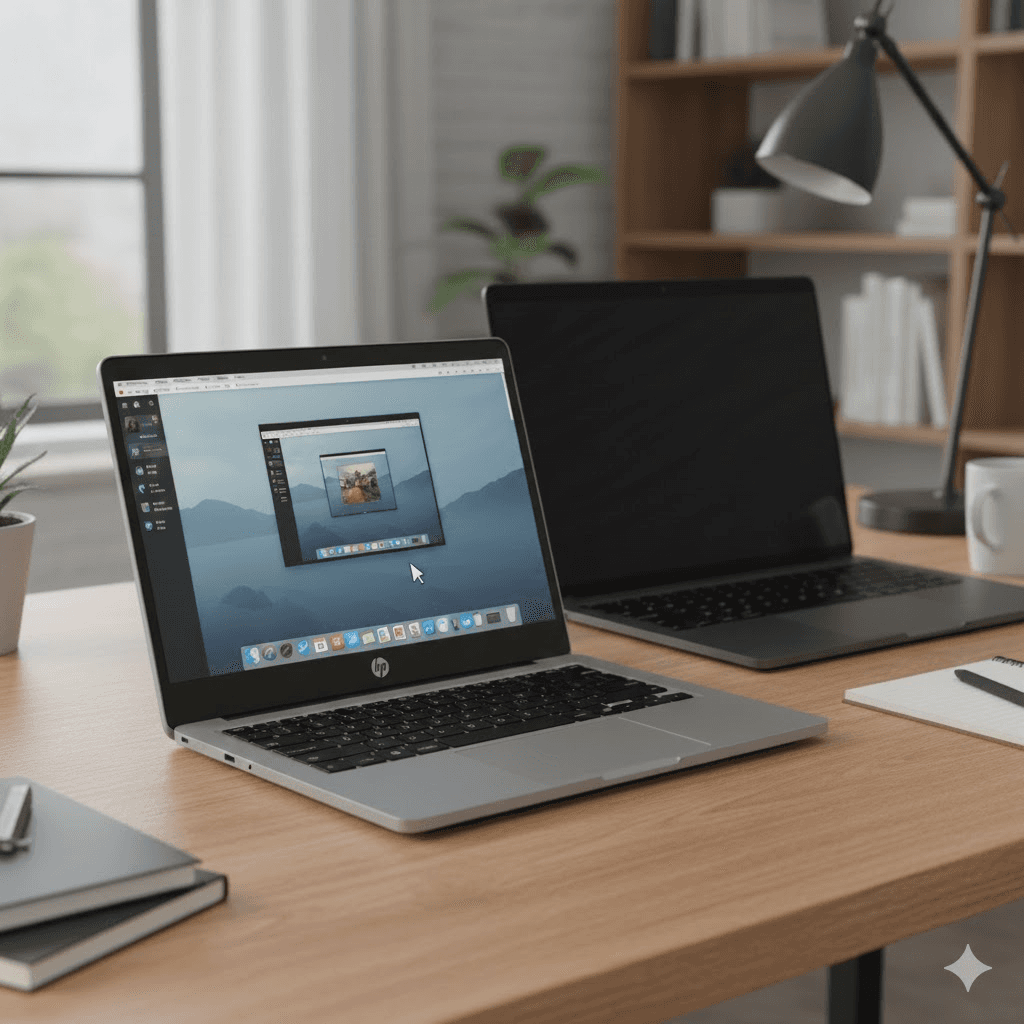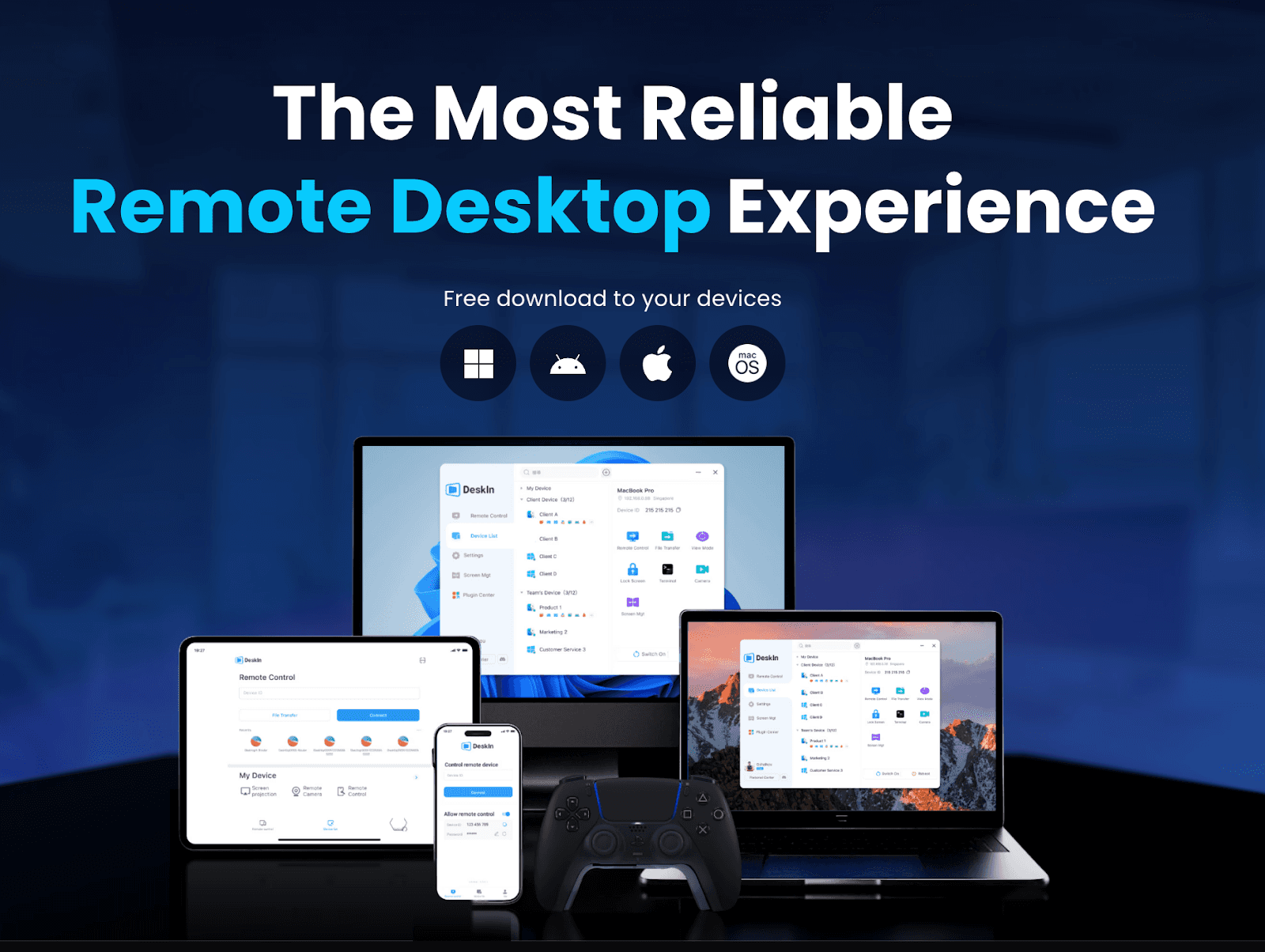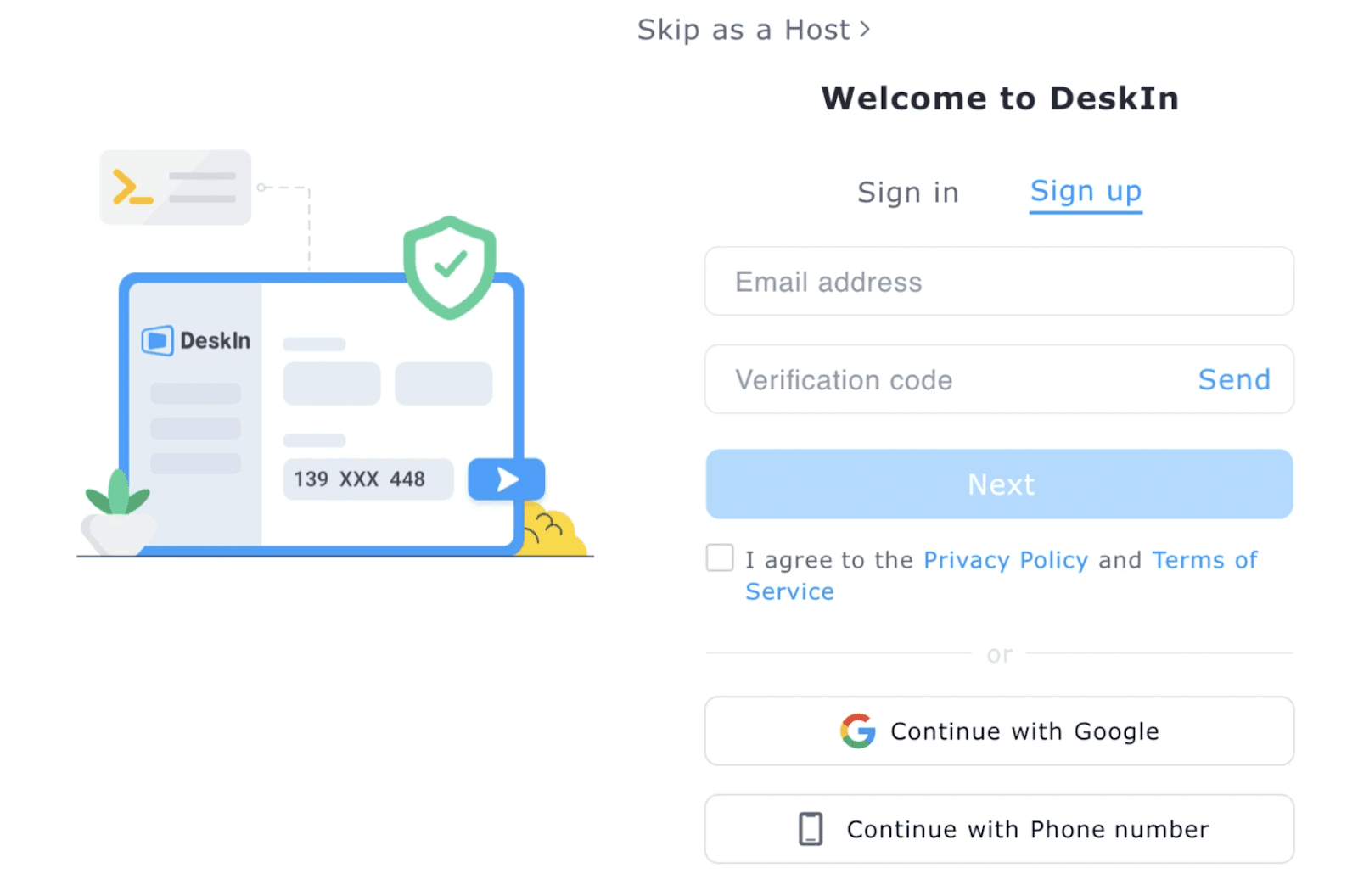Let’s face it. We’re living in a world where “the office” could mean your apartment, a train seat, or even a hotel lobby. But what happens when your main computer is many miles away and you need a file or access to an app? What happens when you need a quick fix for a client problem?
Remote viewing comes right in there. It’s simple, incredibly useful, and — let’s be honest — a little sci-fi in the best way. With the right setup, you can access your main device from almost anywhere, without lugging all your gear around. This trick is worth learning for you, whether you are a digital nomad, a freelancer, a remote support tech, or just someone who forgets files.
What Is a Remote Viewing Tool?
So, what is remote viewing in tech?
A remote viewing tool lets you access and control another device (usually your primary desktop or laptop) over the internet from a different device. And it’s more than just watching a screen. You can interact with the system in real-time: open apps, type, click, edit, drag files around — you can even restart the remote computer. Unlike screen sharing, where you’re mostly limited to observing, remote viewing tools give you full control.
Here are a few popular options:
DeskIn – DeskIn connects both smoothly and also offers a modern interface. It is great for both professionals and creatives.
AnyDesk – Even though free versions can be limited, AnyDesk is popular, and it is easy to use.
Chrome Remote Desktop – Chrome Remote Desktop is a Browser-based remote access tool. It is also simple to set up.
For this guide, we will highlight DeskIn– our go-to remote access software for its fast speed, free plan, and also cross-platform compatibility.
Why Use Remote Viewing for Productivity?
Let’s break down how remote viewing makes your day-to-day work easier and more flexible.
Work from Anywhere
You can say goodbye to carrying a heavy laptop from now on. Your main workstation can stay safely at home while you work through another PC, smartphone, or tablet through remote viewing.
This setup lets you log in to your usual environment quickly and easily, whether you’re traveling, working from a coffee shop, or just in another room. You’ll have full access to all your files, programs, and settings without missing a beat.
It’s particularly useful for:
Freelancers on the move
Designers needing full desktop power through a lightweight tablet
Students accessing school projects from the library
Instant File Access

Ever had that “Oh no, it’s on my other laptop” moment? We’ve all been there — that heart-stopping second when you realize your pitch deck, that ultra-important client file, or even your half-finished design is stranded miles away on your home computer. With a remote tool, it doesn’t matter. Simply open up the app, and then connect to your computer. You are then able to grab whatever you need.
You can:
Transfer files between cross-systems.
Directly edit files on your remote desktop environment
Avoid emailing files back and forth to yourself
Want a quick mobile-focused guide? Learn how to access files on your computer from Android for fast on-the-go productivity.
Reduce Distraction
Sometimes, less is more.
When you use remote viewing from your iPad (or any sleek little sidekick), you’re not just controlling another computer — you’re curating your space. No messy desktops. No side chats. Just you and the one thing you actually need open: your design tool, email app, or whatever mission you're on today.
This setup is great for:
Deep work or writing sessions
Reviewing work without notifications
Creative tasks like video editing, digital art, or layout design
It’s a small change that can make a big difference, especially when you turn your iPad into a second monitor to improve your work efficiency.
Fix Problems Fast
Remote viewing isn’t just for solo work — it’s for helping people without moving more than a finger. Frankly, if you’re known as the tech-savvy one in your group, you’ve probably been asked to fix someone’s phone — likely during the phone call itself.
Your dad can’t find the Settings icon. Again.
Your teammate’s screen freezes right before a big deadline.
Your client is in full-on panic mode because their app isn’t doing what it’s supposed to.
Instead of walking them through a 12-step process, you just remote in. This eliminates any need for one to say, “No, not that button!”
Curious how remote viewing also helps with remote support and troubleshooting? Here’s how you can rescue your PC from anywhere using DeskIn.
Why DeskIn Is the Remote Viewing Powerhouse for Modern Work

Remote viewing isn’t just about accessing a desktop—it’s about working in a way that is better, faster, and also more flexible. DeskIn delivers that experience, with security, clarity, and speed, that mobile professionals need today.
Whether you’re a designer on an iPad, a digital nomad juggling time zones, or a multitasker who moves between screens, DeskIn isn’t just helpful—it’s transformative.
Instant Response, Real-Time Control: Forget the lag. Remote interactions can feel smooth with DeskIn, which delivers performance that is lightning-fast and latency that is as low as 40ms, like local work.
4K Clarity for Pixel-Perfect Work: DeskIn supports up to 4K 60FPS and 2K 144FPS using True Color rendering, giving you a crystal-clear view of your desktop no matter what device you’re using.
Security That Protects You, Wherever You Work: Because DeskIn takes security seriously, it ensures remote productivity with enterprise-grade protection for every user. DeskIn lets you confidently work securely on any network, even public Wi-Fi when accessing financial data or editing a slide deck. Here’s what’s built in:
AES-256-bit encryption for every session
TLS end-to-end encryption to keep data secure during transit
Multi-factor authentication (MFA) to block unauthorized logins
Permission-based access controls—you choose who can connect and what they can see
Free Advanced features: DeskIn includes powerful features at no extra cost
Screen Mirroring: Share your screen in real-time—ideal for presentations, gaming, or remote feedback.
Screen Extension: Turn a second device into an extra display to boost multitasking.
Auto 3D View for Gaming: Enjoy optimized visuals and smoother remote play with automatic 3D rendering.
Get Started with DeskIn: The Remote Viewing Setup on Any Device
DeskIn makes setting up remote viewing as easy as ordering your favorite latte — no tech wizardry required (though the results might feel like it).
Whether you're editing Photoshop layers from your iPad in bed, reviewing files on your iPhone while riding in an Uber, or tapping into your MacBook from a coffee shop, DeskIn makes it effortless.
Cross-Platform, No Problem
First off, DeskIn is built for cross-platform flexibility. DeskIn works across Windows, macOS, Android, and iOS—mix and match freely. As long as your devices are online, you can connect without cables, OS limits, or hassle.
Remote Viewing Setup for Laptops and Desktops (Windows/macOS)
Your main computer is the hub of your remote setup — it’s the device you’ll be controlling from another pc, phone, or tablet.
Step 1: Download DeskIn on Your Main PC or Mac
Go to DeskIn’s official website or App Store, choose your platform (macOS or Windows), and download and run the installer.

Step 2: Install and Sign Up
Open DeskIn after installation, click “Sign Up” or “Log In” as needed, and register your email to get started.
Step 3: Set macOS Permissions (Skip This Step if You’re on Windows)

macOS will request permissions, just head to Privacy & Security and enable Screen Recording, Accessibility, and Full Disk Access.
Step 4: Customize Device Name and Set Access Password
For instance, give your device a name like “Office-PC,” something that is memorable, and set up a connection password for extra security.
Step 5: Keep DeskIn Running in the Background
Keep DeskIn running for remote sessions, enable auto-start via DeskIn Settings → General → Autostart, and your desktop will be ready for remote control.
Remote Viewing Setup for Smartphones (iOS & Android)
This is your remote control center—perfect for file access, quick edits, or emergency tech support on the move.
Step 1: Download the Mobile App
Search for DeskIn on the App Store for iOS or on Google Play for Android.
Step 2: Log In with Your DeskIn Account
Use the same email and password you used to register your desktop
Step 3: Choose Your Host Device
Once logged in, select the device you want to connect to from the list, enter the password if prompted, choose ‘remote control,’ and start remote viewing.

Remote Viewing Setup for Tablets (iPad & Android Tablets)
This is your portable workstation—ideal for creatives, writers, and remote workers who want a big screen without the bulk.
Step 1: Download DeskIn from Your App Store
Just like mobile, search “DeskIn” on your tablet’s app store and install it
Step 2: Log In
Use your existing DeskIn account, and your registered laptop or desktop will appear
Step 3: Connect to Your Computer
Tap the listed device, choose the remote control feature, enter the password if prompted, and you’re in your remote workspace.

Step 4: Optimize for Tablet Power Use
Creative Workflows
Use Apple Pencil or a stylus to navigate design software (e.g., Figma, Photoshop)
Draw, annotate, or sign documents as if you were using a desktop pen tablet
Add Mouse + Keyboard
Connect Bluetooth accessories to turn your tablet into a full productivity station
Useful for spreadsheet work, copywriting, editing, or software development
Remote Viewing = Freedom + Productivity
In today’s work-anywhere world, productivity isn’t about location but about what you can access. Remote viewing lets you reclaim control of your time, your workflow, and your freedom, not just a connection to a screen.
DeskIn makes it effortless — whether you’re reviewing designs from a café, fixing a file from your phone, or running your entire desktop from a tablet. It’s beautifully clear, secure, also fast, working across all your devices—without the headaches of customary remote access tools.
If you are ready to leave all the limitations behind, now is the time. You, too, can embrace the true productivity that is location-free.
👉 Click here to download DeskIn.
Looking for alternatives before you decide? We’ve compared DeskIn with other remote work software options so you can see why DeskIn stands out for remote viewing.
Let’s face it. We’re living in a world where “the office” could mean your apartment, a train seat, or even a hotel lobby. But what happens when your main computer is many miles away and you need a file or access to an app? What happens when you need a quick fix for a client problem?
Remote viewing comes right in there. It’s simple, incredibly useful, and — let’s be honest — a little sci-fi in the best way. With the right setup, you can access your main device from almost anywhere, without lugging all your gear around. This trick is worth learning for you, whether you are a digital nomad, a freelancer, a remote support tech, or just someone who forgets files.
What Is a Remote Viewing Tool?
So, what is remote viewing in tech?
A remote viewing tool lets you access and control another device (usually your primary desktop or laptop) over the internet from a different device. And it’s more than just watching a screen. You can interact with the system in real-time: open apps, type, click, edit, drag files around — you can even restart the remote computer. Unlike screen sharing, where you’re mostly limited to observing, remote viewing tools give you full control.
Here are a few popular options:
DeskIn – DeskIn connects both smoothly and also offers a modern interface. It is great for both professionals and creatives.
AnyDesk – Even though free versions can be limited, AnyDesk is popular, and it is easy to use.
Chrome Remote Desktop – Chrome Remote Desktop is a Browser-based remote access tool. It is also simple to set up.
For this guide, we will highlight DeskIn– our go-to remote access software for its fast speed, free plan, and also cross-platform compatibility.
Why Use Remote Viewing for Productivity?
Let’s break down how remote viewing makes your day-to-day work easier and more flexible.
Work from Anywhere
You can say goodbye to carrying a heavy laptop from now on. Your main workstation can stay safely at home while you work through another PC, smartphone, or tablet through remote viewing.
This setup lets you log in to your usual environment quickly and easily, whether you’re traveling, working from a coffee shop, or just in another room. You’ll have full access to all your files, programs, and settings without missing a beat.
It’s particularly useful for:
Freelancers on the move
Designers needing full desktop power through a lightweight tablet
Students accessing school projects from the library
Instant File Access

Ever had that “Oh no, it’s on my other laptop” moment? We’ve all been there — that heart-stopping second when you realize your pitch deck, that ultra-important client file, or even your half-finished design is stranded miles away on your home computer. With a remote tool, it doesn’t matter. Simply open up the app, and then connect to your computer. You are then able to grab whatever you need.
You can:
Transfer files between cross-systems.
Directly edit files on your remote desktop environment
Avoid emailing files back and forth to yourself
Want a quick mobile-focused guide? Learn how to access files on your computer from Android for fast on-the-go productivity.
Reduce Distraction
Sometimes, less is more.
When you use remote viewing from your iPad (or any sleek little sidekick), you’re not just controlling another computer — you’re curating your space. No messy desktops. No side chats. Just you and the one thing you actually need open: your design tool, email app, or whatever mission you're on today.
This setup is great for:
Deep work or writing sessions
Reviewing work without notifications
Creative tasks like video editing, digital art, or layout design
It’s a small change that can make a big difference, especially when you turn your iPad into a second monitor to improve your work efficiency.
Fix Problems Fast
Remote viewing isn’t just for solo work — it’s for helping people without moving more than a finger. Frankly, if you’re known as the tech-savvy one in your group, you’ve probably been asked to fix someone’s phone — likely during the phone call itself.
Your dad can’t find the Settings icon. Again.
Your teammate’s screen freezes right before a big deadline.
Your client is in full-on panic mode because their app isn’t doing what it’s supposed to.
Instead of walking them through a 12-step process, you just remote in. This eliminates any need for one to say, “No, not that button!”
Curious how remote viewing also helps with remote support and troubleshooting? Here’s how you can rescue your PC from anywhere using DeskIn.
Why DeskIn Is the Remote Viewing Powerhouse for Modern Work

Remote viewing isn’t just about accessing a desktop—it’s about working in a way that is better, faster, and also more flexible. DeskIn delivers that experience, with security, clarity, and speed, that mobile professionals need today.
Whether you’re a designer on an iPad, a digital nomad juggling time zones, or a multitasker who moves between screens, DeskIn isn’t just helpful—it’s transformative.
Instant Response, Real-Time Control: Forget the lag. Remote interactions can feel smooth with DeskIn, which delivers performance that is lightning-fast and latency that is as low as 40ms, like local work.
4K Clarity for Pixel-Perfect Work: DeskIn supports up to 4K 60FPS and 2K 144FPS using True Color rendering, giving you a crystal-clear view of your desktop no matter what device you’re using.
Security That Protects You, Wherever You Work: Because DeskIn takes security seriously, it ensures remote productivity with enterprise-grade protection for every user. DeskIn lets you confidently work securely on any network, even public Wi-Fi when accessing financial data or editing a slide deck. Here’s what’s built in:
AES-256-bit encryption for every session
TLS end-to-end encryption to keep data secure during transit
Multi-factor authentication (MFA) to block unauthorized logins
Permission-based access controls—you choose who can connect and what they can see
Free Advanced features: DeskIn includes powerful features at no extra cost
Screen Mirroring: Share your screen in real-time—ideal for presentations, gaming, or remote feedback.
Screen Extension: Turn a second device into an extra display to boost multitasking.
Auto 3D View for Gaming: Enjoy optimized visuals and smoother remote play with automatic 3D rendering.
Get Started with DeskIn: The Remote Viewing Setup on Any Device
DeskIn makes setting up remote viewing as easy as ordering your favorite latte — no tech wizardry required (though the results might feel like it).
Whether you're editing Photoshop layers from your iPad in bed, reviewing files on your iPhone while riding in an Uber, or tapping into your MacBook from a coffee shop, DeskIn makes it effortless.
Cross-Platform, No Problem
First off, DeskIn is built for cross-platform flexibility. DeskIn works across Windows, macOS, Android, and iOS—mix and match freely. As long as your devices are online, you can connect without cables, OS limits, or hassle.
Remote Viewing Setup for Laptops and Desktops (Windows/macOS)
Your main computer is the hub of your remote setup — it’s the device you’ll be controlling from another pc, phone, or tablet.
Step 1: Download DeskIn on Your Main PC or Mac
Go to DeskIn’s official website or App Store, choose your platform (macOS or Windows), and download and run the installer.

Step 2: Install and Sign Up
Open DeskIn after installation, click “Sign Up” or “Log In” as needed, and register your email to get started.
Step 3: Set macOS Permissions (Skip This Step if You’re on Windows)

macOS will request permissions, just head to Privacy & Security and enable Screen Recording, Accessibility, and Full Disk Access.
Step 4: Customize Device Name and Set Access Password
For instance, give your device a name like “Office-PC,” something that is memorable, and set up a connection password for extra security.
Step 5: Keep DeskIn Running in the Background
Keep DeskIn running for remote sessions, enable auto-start via DeskIn Settings → General → Autostart, and your desktop will be ready for remote control.
Remote Viewing Setup for Smartphones (iOS & Android)
This is your remote control center—perfect for file access, quick edits, or emergency tech support on the move.
Step 1: Download the Mobile App
Search for DeskIn on the App Store for iOS or on Google Play for Android.
Step 2: Log In with Your DeskIn Account
Use the same email and password you used to register your desktop
Step 3: Choose Your Host Device
Once logged in, select the device you want to connect to from the list, enter the password if prompted, choose ‘remote control,’ and start remote viewing.

Remote Viewing Setup for Tablets (iPad & Android Tablets)
This is your portable workstation—ideal for creatives, writers, and remote workers who want a big screen without the bulk.
Step 1: Download DeskIn from Your App Store
Just like mobile, search “DeskIn” on your tablet’s app store and install it
Step 2: Log In
Use your existing DeskIn account, and your registered laptop or desktop will appear
Step 3: Connect to Your Computer
Tap the listed device, choose the remote control feature, enter the password if prompted, and you’re in your remote workspace.

Step 4: Optimize for Tablet Power Use
Creative Workflows
Use Apple Pencil or a stylus to navigate design software (e.g., Figma, Photoshop)
Draw, annotate, or sign documents as if you were using a desktop pen tablet
Add Mouse + Keyboard
Connect Bluetooth accessories to turn your tablet into a full productivity station
Useful for spreadsheet work, copywriting, editing, or software development
Remote Viewing = Freedom + Productivity
In today’s work-anywhere world, productivity isn’t about location but about what you can access. Remote viewing lets you reclaim control of your time, your workflow, and your freedom, not just a connection to a screen.
DeskIn makes it effortless — whether you’re reviewing designs from a café, fixing a file from your phone, or running your entire desktop from a tablet. It’s beautifully clear, secure, also fast, working across all your devices—without the headaches of customary remote access tools.
If you are ready to leave all the limitations behind, now is the time. You, too, can embrace the true productivity that is location-free.
👉 Click here to download DeskIn.
Looking for alternatives before you decide? We’ve compared DeskIn with other remote work software options so you can see why DeskIn stands out for remote viewing.

